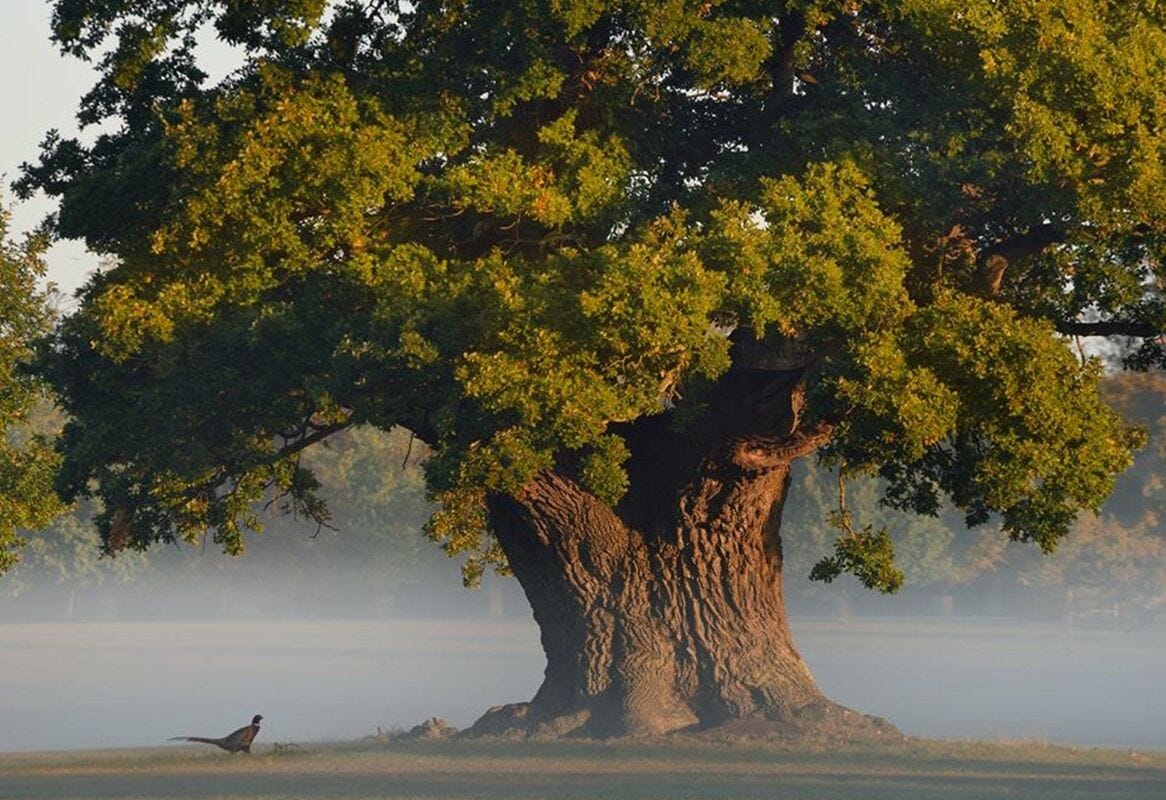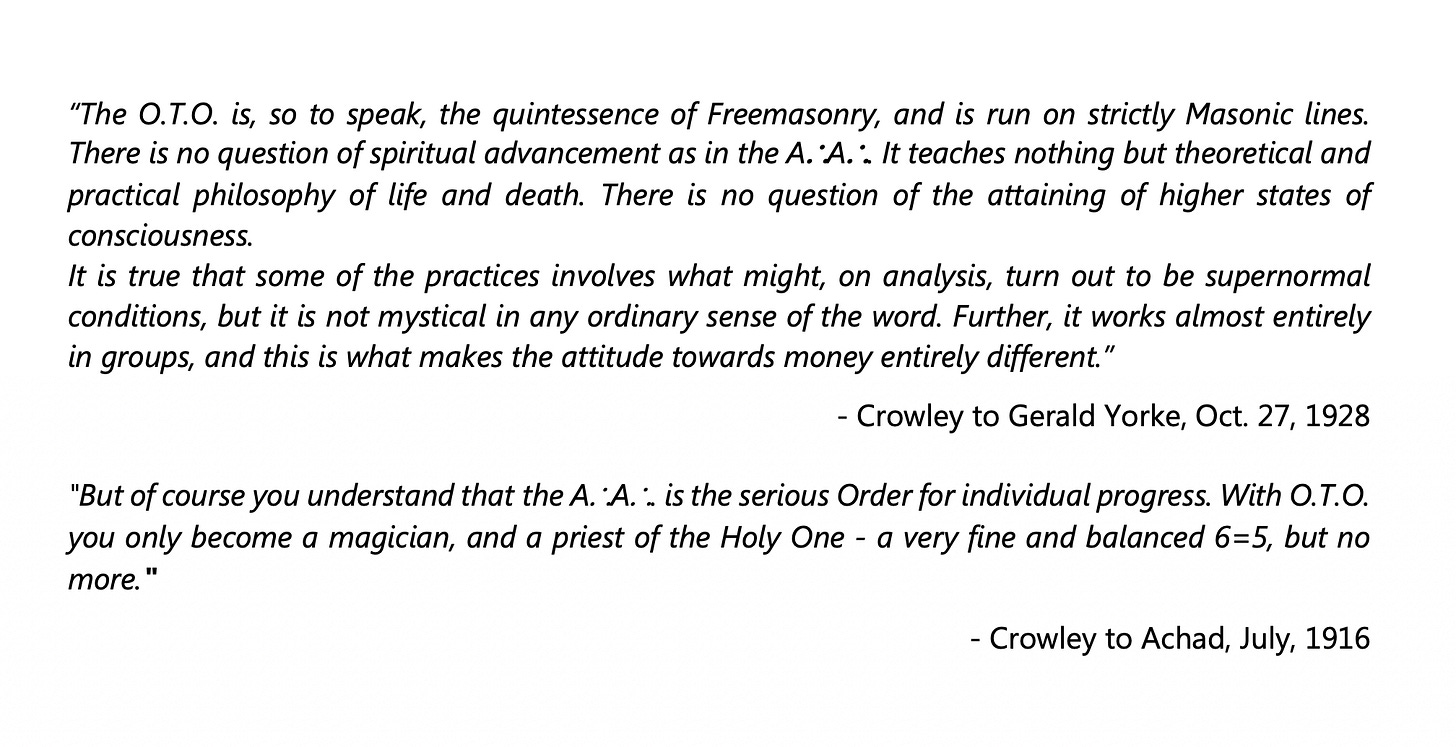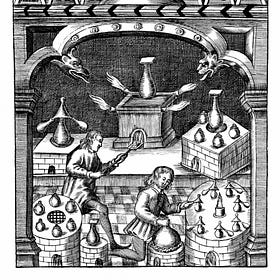By word and deed, we have long sought the fellowship of kindred souls—a bond forged in shared aspirations, tempered by trials, and crowned with mutual respect.
The yearning for true brotherhood whispers to the deepest chambers of the human spirit. Yet, what is brotherhood in practice, and how steadfast is it when called to weather the storms of ego and ambition?
Having walked the paths of many esoteric orders, I have come to measure the word "Brother" with a critical eye.
From the sacred halls of Freemasonry to the fluid circles of magical orders, my journey has revealed much about the promise—and peril—of the fraternal ideal.
Let us draw back the veil and examine the nature of brotherhood: is it a fortress of unity, or a flickering mirage upon the sands of personal ambition?
The Roots Beneath the Stone
Freemasonry, like the mighty oak1, stands rooted in centuries of tradition. Its brotherhood is not merely declared but forged in the crucible of shared labour. Emerging from mediaeval guilds and shaped by Enlightenment ideals, its teachings transcend class, creed, and circumstance. The level, plumb, and square—emblems of equality, uprightness, and fairness—are not just symbols; they are promises etched into the very fabric of the Craft.
Though steeped in mystery and beauty, other esoteric orders often lack this depth of grounding. Born of Hermetic lore, mystery schools, and the fervour of the Golden Dawn revival, they may possess the trappings of fraternity but lack its architectural rigour. Their lineage may be ancient (or so they claim), but their structure is often ephemeral, built more on charisma than cornerstone.
Within the lodge, every word spoken, every step taken, and every tool wielded is steeped in meaning. Freemasonry weaves a tapestry of symbols that demand accountability and unity. Ritual is not a mere performance; it is a covenant. To call another man "Brother" is to bind yourself to his welfare, place his needs alongside your own, and be the hand that lifts when he stumbles. Freemasonry’s call to charity, mentorship, and mutual aid ensures its principles breathe beyond the temple walls. The distressed Mason finds his brothers not merely willing but bound to offer solace, whether through material aid or moral support.
In esoteric orders, the principle of reciprocity may be present but is often inconsistent. One’s experience depends largely on the investment of time, trust, and energy—a mirror reflecting personal dedication. Yet when that mirror shatters under the weight of clashing egos or unmet expectations, the notion of brotherhood often fragments with it. Without formal structures to uphold the ideal, the bonds of fraternity are vulnerable to the whims of the individual.
Brotherhood: A Reality or a Dream?
The world has changed, and with it, the landscape of the very concept of brotherhood. The digital age allows seekers to form connections across continents, yet these bonds often remain as tenuous as the threads of the web itself. Freemasonry, with its time-tested rituals and robust framework, stands as a bulwark against modern isolation—a reminder that unity requires not only shared ideals but shared space and effort.
Yet, even Freemasonry faces the challenge of remaining relevant. Generational shifts and the demands of modern life can dim the luster of its traditions. Still, its endurance speaks to a truth that other orders might heed: brotherhood flourishes when nurtured by structure, discipline, and a commitment to shared values.
At its best, Freemasonry embodies a vision of brotherhood that is not a mere abstraction but a reality anchored in ritual and responsibility. Each member, bound by the same oaths, stands not above or below but beside his fellows. It is this balance—this sacred symmetry—that elevates the Masonic ideal beyond the realm of utopian dreams. Yet, like a cathedral built stone by sacred stone, this enduring framework of fraternity owes its strength to the bedrock upon which it rests: the ethics and morality of the Old Aeon.
From a Thelemic perspective, we see this clearly. Freemasonry thrives because it was forged in an age of fixed hierarchies, shared moral obligations, and an unyielding sense of collective duty—a time when the stars of ethics and morality guided the hands of men to shape not just lodges but the very spirit of fraternity.
But as the temple doors of the New Aeon creak open and the golden light of Thelema spills forth, that Old Aeonic foundation begins to tremble, revealing the shifting sands beneath. The New Aeon, as revealed in Liber AL vel Legis, declares the sovereignty of the individual Will, a liberation from the moral chains of the past. It calls for a new ethic, one that exalts self-determination, diversity of purpose, and the interplay of unique Wills over the steady hum of collective unity. In this new paradigm, the brotherhood of the Old Aeon—rooted in mutual responsibility and shared codes of behaviour—becomes an anachronism, a beautiful but distant relic of a world governed by the levelling hand of tradition.
This, I would argue, is the heart of the O.T.O.’s struggle. Conceived as the child of two worlds—the ritual splendour of Freemasonry and the wild, radiant spirit of Thelema—it was destined for a paradoxical existence.
The O.T.O. sought to become a kind of “New Aeonic Freemasonry,” a temple for a liberated age. But here is the rub: the essence of Freemasonry lies in its collective ethic, its unshakeable commitment to fraternity as both a principle and a practice. Without this bedrock, the stones of brotherhood crumble into dust.
And yet, the O.T.O. could not fully embrace the individualism of the New Aeon either, for the demands of fraternity—shared goals, shared duties, shared sacrifice—stand in tension with the untamed freedom of the sovereign Will. And, sadly, it almost never fulfils its promise, as I outlined in my previous article:
YOU GET OUT WHAT YOU PUT IN
The promise that effort yields reward lies at the heart of many spiritual and magical orders. “You get out what you put in” is an alluring maxim, speaking to the hope that sincerity, perseverance, and dedication will bear fruit.
Elsewhere, in other esoteric orders, the pursuit of fraternity fares no better. These groups, with their fluid hierarchies and shifting allegiances, embody the New Aeonic ethos of individual freedom. Brotherhood here becomes less a fortress and more a fleeting wind, brushing lightly against the skin before moving on. It is a personal quest, not a structural guarantee, and while it may sometimes produce moments of transcendent connection, it lacks the stability to endure the tempests of clashing egos and diverging desires. Without the girders of a shared ethic or the cement of collective responsibility, these bonds risk becoming ephemeral—a golden mist that dissipates when the sun of shared commitment sets.
Still, there is beauty in the chaos. The New Aeon, properly understood and freed from the shackles of enforced hierarchy, does not seek to replicate the Old Aeon’s order. It does not demand shared codes or the symmetry of ritualised bonds. It celebrates the interplay of diverse Wills, a dance of light and shadow, where unity is fleeting but authentic, arising naturally when stars align. Brotherhood, in the New Aeonic sense, is not forged in stone but flows like water, taking new shapes with every passing moment.
A Closing Word
But herein lies the paradox. The Masonic vision of fraternity endures because it is built upon the architecture of the Old Aeon, a system designed to transcend the fickle nature of human relationships. Its rituals, symbols, and oaths anchor the fraternity in something greater than the individual, something immutable.
In the New Aeon, where the individual reigns supreme and the stars are no longer fixed but free to chart their own paths, the dream of brotherhood becomes more elusive. It is not gone but transformed—less a cathedral and more a constellation, beautiful in its freedom but fragile in its form.
So, let us consider the cost of this transformation. Freemasonry, rooted in the Old Aeon, offers a brotherhood that stands like an ancient oak, weathering the storms of time. The New Aeon, in contrast, gives us a forest of wild, untamed trees, each reaching for the sun on its own terms. Both are wondrous in their way, but they are not the same.
And so I ask again, with a note of both reverence and melancholy: Where art thou, Brother o’ mine? Shall we meet among the sturdy halls of the past or beneath the open skies of the future? Only time—and Will—will tell.
Incidentally, Crowley would use the metaphor of the Oak to describe the “greater and lesser hospitality of the O.T.O.” in Liber CXXIV - Of Eden and the Sacred Oak—one of the many never-realised utopias of the Order.








A good read, with interesting points and images. I'm looking at it in the context of aiding a distressed brother or sister. I'm asking myself if the points made provide the reason for the perceived breaking of oaths when - even in Freemasonry - helping a brother or sister out doesn't always occur, and the dashing of expectations causes one to view the other as being unfaithful to their vow of brotherhood and the welfare of others. Maybe there is no longer a question of a vow being broken and of judging the brother or sister who is supposed to have fallen short, in this Aeon. Is it the case that the individual is now their own support system and there isn't the same interdependence and sense of obligation as before, as a natural progression from the old? Or is helping a brother or sister out just the consequence of Wills being aligned magically at the right time rather than a performative obligation that is to be fulfilled? I hope I'm expressing it properly!
I always find it funny how you and I are on similar wavelengths. I have a piece I'm working on called 'Tree Meet Forest' over this very theme ... LOL! It won't be ready for months, of course. But you always beat me to the punch. :D Great thoughts here. I love it!
But we have to work to move past these archaic, stratified, and fossilized models of performative/spectator fraternities. They may have (did) work in an industrial society of backroom, handshake contracts, gentleman deals, and honor by virtue of having the same ring and oath, but today it takes more than that. Our individualized and fractured society—not to even mention the "new aeon" at all—demands new forms of religion, philosophy, politics, and the systems to support all those while still acknowledging that we are social creatures that cannot exist apart from the need for communal structures.
We are each a tree, individually, on our own. We exist as part of a larger forest. Our root systems are all entangled, whether any of us like to acknowledge that or not. It's best we find a way to stand on our own while working to ensure the best survival for the forest-at-large—and for all the creatures that utilize that forest for their survival as well.